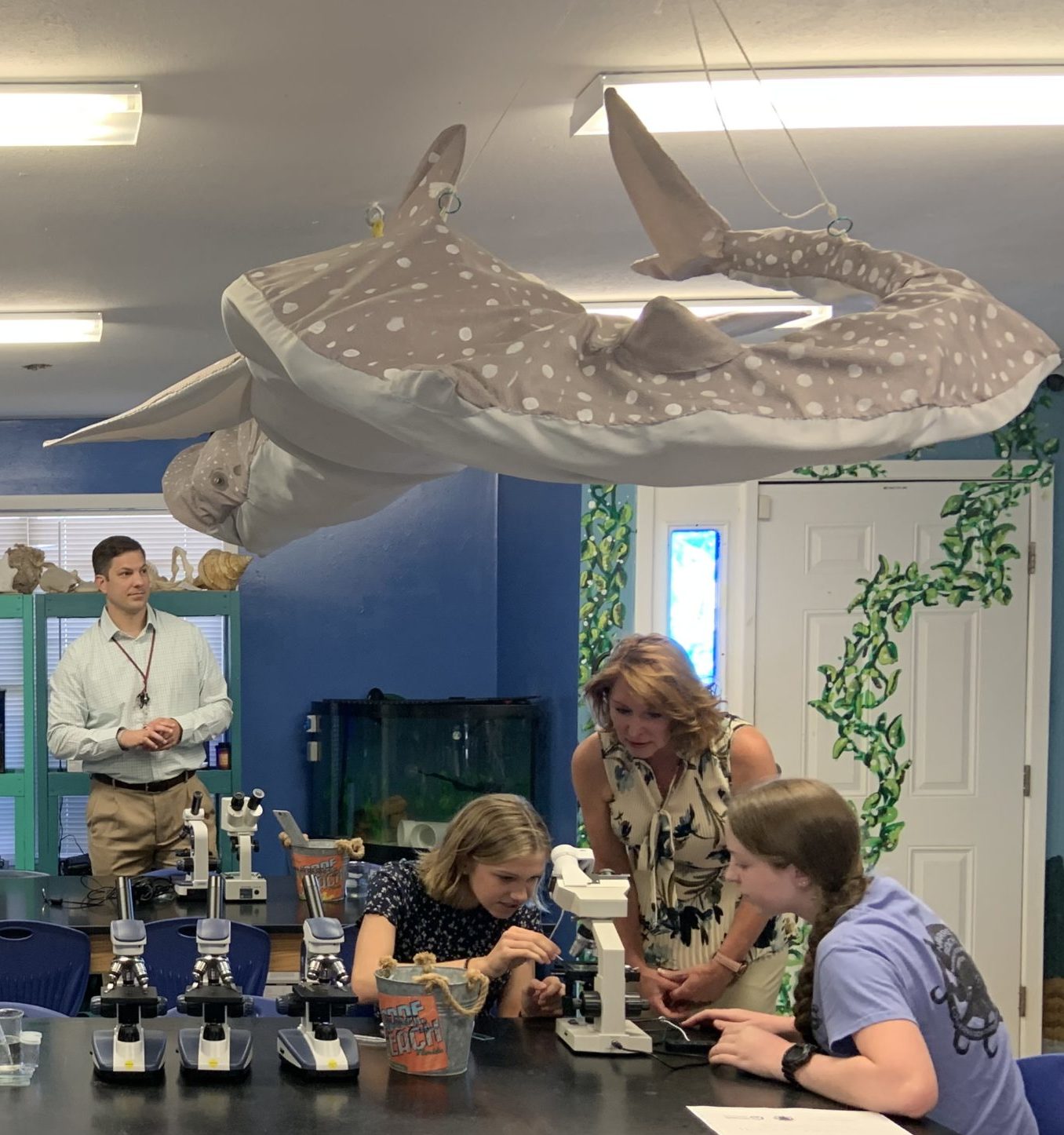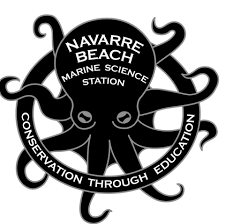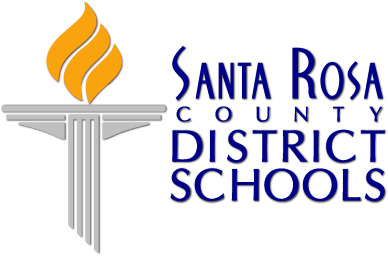Cassie and Sailor each received a $1,500 grant from GCOOS for their efforts. Both were surprised to be recognized on Tuesday.
“I am so thankful for this opportunity to spread awareness of algal blooms and Enterococcus bacteria,” Cassie said. “I’m grateful to be able to work with Sailor and to be guided by Mrs. Mauro along this adventure. I love being part of something so impactful and I hope that our work will inspire others to teach future generations to be ocean stewards. Loving the ocean makes life magical!”
Sailor was also surprised at the recognition. “This project is such a great opportunity and I am incredibly thankful for everything I have been exposed to being a student at the Navarre Beach Marine Science Station,” she said. “Cassie is a great partner and being able to spread awareness is exciting.”
The lesson plans Cassie and Sailor are developing are based on water quality data from Dauphin Island Marine Station and focus on bacteria in the Bay. They’ve been working with GCOOS Outreach and Education Manager Dr. Chris Simoniello to develop the plans.
“This is a great example of how we can connect students with real life ocean data and help show the real-world applications for the information that scientists, researchers, resource managers and others gather,” Simoniello said. “Having students work to apply data and information not only provides a valuable test of the usability of the evolving information system, it also helps them build leadership skills.”
The students were so excited about working to develop ocean lessons they are now expanding their ocean science leadership by becoming volunteers providing data for the Red Tide Respiratory Forecast, developed by the National Oceanic and Atmospheric Administration (NOAA), GCOOS, Florida, and other partners.
This Forecast (at RedTideForecast.com) allows residents, tourists, and businesses along the beaches to know whether impacts from red tide are expected to occur in their location and what the level of impact is expected to be. The Red Tide Respiratory Forecast system is activated when red tide is present along beaches. Since red tide was first reported in the Panhandle in September, GCOOS has been working to expand the team of volunteers to that part of Florida.
“Given the number of beaches we have in Florida, the Red Tide Respiratory Forecast really depends on a committed team of volunteers to help us gather the data we need to keep people safe,” said GCOOS Volunteer Coordinator Grant Craig. “It’s great that Cassie and Sailor are joining the team!”
As volunteers, the students will collect water samples, then use HABscope to determine whether Karenia brevis, the organism that causes Florida’s red tide, is present. That data is then used to develop the Forecast.
About Red Tide and the Respiratory Forecast
Red tides in the Gulf of Mexico are caused by Karenia brevis, which has toxins that can be harmful to humans. Most people experience red tide toxins as minor respiratory irritation — coughing, sneezing, teary eyes and an itchy throat. Typically, these symptoms go away when they leave the beach.
But people with chronic lung problems like asthma and chronic obstructive pulmonary disease (COPD) can have more severe reactions when they breathe in air-borne red tide toxins — even ending up in the emergency room. Health officials advise these people to avoid areas experiencing red tide altogether, take all medications as prescribed and have access to rescue inhalers. People with chronic lung disease should leave the beach if they begin experiencing respiratory problems, even if red tide is at very low or low concentrations.
Red tide impacts can be extremely variable because of wind patterns. There are very few days when all beaches will be affected by red tide, and often your favorite beach is only affected for part of the day. The Red Tide Respiratory Forecast lets people see which beaches might be impacted by red tide and at what time of the day, allowing them to plan beach walks and other outdoor activities accordingly. They can use this tool the same way they use other weather reports.”
About HABscope
HABscope is low-cost portable microscope system developed by GCOOS that uses AI and other technologies to automatically detect the presence of Karenia brevis in water samples. (K. brevis is the organism that causes red tides in the Gulf of Mexico.)
First, a volunteer collects a water sample from a designated location, then uses the adapted microscope to take a video of the slide and transmit the data. A computer “reads” the slide and detects whether red tide cells are present. That information is then combined with additional data on water currents, wind speed and direction and other information by NOAA to develop the Red Tide Respiratory Forecast. The Red Tide Respiratory Forecast is available to the public at www.RedTideForecast.com.



















